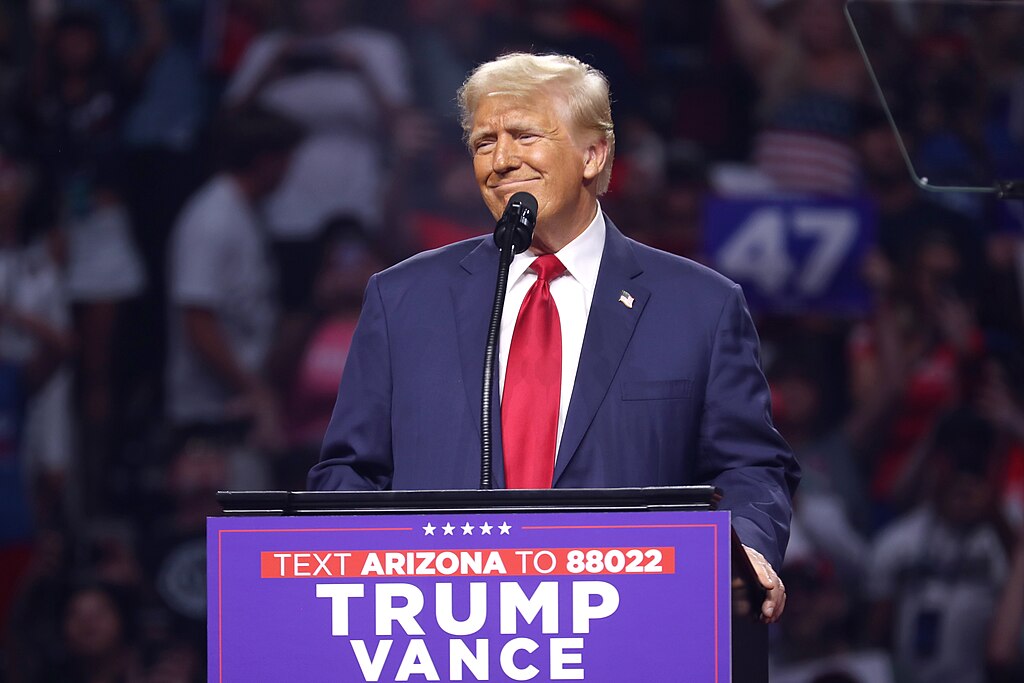As cyber threats continue to rise globally, former President Donald Trump has unveiled his ambitious cybersecurity agenda for 2025. The plan, which builds on his administration's previous initiatives, aims to fortify U.S. digital infrastructure, establish stricter cyber defense mechanisms, and address escalating cyberattacks from state and non-state actors.
Cybersecurity has taken center stage in Trump’s return to political leadership, with a renewed focus on safeguarding national interests in the digital age. His plan reportedly emphasizes strengthening public-private partnerships, enhancing national cyber defense strategies, and targeting global cybercrime operations.
National Cybersecurity Agency Expansion
One of the cornerstones of Trump’s cybersecurity plan is the expansion of the National Cybersecurity Agency (NCA), which was established during his first term. Under the 2025 agenda, the NCA would receive increased funding and resources to combat cyberattacks on critical infrastructure, including financial institutions, energy grids, and healthcare systems.
The proposal also includes the creation of a Cyber Defense Command within the U.S. military, tasked with addressing national security threats in the cyber domain. This initiative aims to counter growing cyber risks posed by countries like China, Russia, and North Korea.
Digital Sovereignty and Border Security
Trump’s cybersecurity vision places significant emphasis on digital sovereignty, proposing a controversial measure to block foreign software and technology deemed a security risk. The policy seeks to prevent cyber espionage and intellectual property theft by limiting U.S. reliance on foreign-made digital tools.
Additionally, the plan outlines stricter regulations for foreign tech firms operating in the United States, potentially requiring increased transparency and compliance with American cybersecurity standards.
Controversy Over Privacy Concerns
While supporters laud the plan as a proactive approach to national security, critics have raised concerns about its potential impact on personal privacy. Cyber policy experts warn that increased government surveillance could infringe upon civil liberties, sparking debates about the balance between security and privacy.
Civil rights organizations have expressed alarm over the possibility of mass data collection under the guise of cybersecurity, urging lawmakers to implement oversight measures to protect citizens' rights.
Social Media Reactions
The announcement of Trump’s cybersecurity plan ignited a flurry of reactions on social media, with opinions divided along political lines:
- @CyberAdvocate2025: “Finally, a leader who understands the importance of protecting our digital borders. We need this now!”
- @PrivacyFirst2025: “This sounds like an excuse to spy on Americans. Who’s protecting us from the government?”
- @TechInnovatorUSA: “Blocking foreign tech could hurt innovation. Let’s focus on collaboration, not isolation.”
- @DefendOurData: “Stronger cybersecurity is essential, but at what cost? We need checks and balances.”
- @CodeWarrior2025: “Cyber threats are real, and Trump’s plan is bold. Let’s hope it delivers results.”
- @GlobalPeaceNow: “Cybersecurity is important, but this could escalate international tensions. Diplomacy matters, too.”
The Path Ahead
As the U.S. grapples with evolving cyber challenges, Trump’s 2025 cybersecurity agenda signals a significant shift in digital policy. While the plan seeks to bolster national security, its potential implications for privacy, innovation, and international relations remain contentious. Only time will reveal whether this approach can effectively shield the nation from cyber threats or fuel further division.



 International Stabilization Force for Gaza Nears Deployment as U.S.-Led Planning Advances
International Stabilization Force for Gaza Nears Deployment as U.S.-Led Planning Advances  Tunisia Protests Grow as Opposition Unites Against President Kais Saied’s Rule
Tunisia Protests Grow as Opposition Unites Against President Kais Saied’s Rule  U.S. Special Forces Intercept Ship Carrying Military Components Bound for Iran
U.S. Special Forces Intercept Ship Carrying Military Components Bound for Iran  Bolivia Orders Pre-Trial Detention of Former President Luis Arce Over Embezzlement Probe
Bolivia Orders Pre-Trial Detention of Former President Luis Arce Over Embezzlement Probe  Russian Drone Attack Hits Turkish Cargo Ship Carrying Sunflower Oil to Egypt, Ukraine Says
Russian Drone Attack Hits Turkish Cargo Ship Carrying Sunflower Oil to Egypt, Ukraine Says  Belarus Frees Opposition Leaders Maria Kalesnikava and Viktar Babaryka in U.S.-Brokered Deal
Belarus Frees Opposition Leaders Maria Kalesnikava and Viktar Babaryka in U.S.-Brokered Deal  U.S. Lifts Sanctions on Brazilian Supreme Court Justice Amid Shift in Brazil Relations
U.S. Lifts Sanctions on Brazilian Supreme Court Justice Amid Shift in Brazil Relations  International Outcry Grows Over Re-Arrest of Nobel Laureate Narges Mohammadi in Iran
International Outcry Grows Over Re-Arrest of Nobel Laureate Narges Mohammadi in Iran  U.S. Soldiers Killed in ISIS Attack in Palmyra, Syria During Counterterrorism Mission
U.S. Soldiers Killed in ISIS Attack in Palmyra, Syria During Counterterrorism Mission  Ukraine’s NATO Concession Unlikely to Shift Peace Talks, Experts Say
Ukraine’s NATO Concession Unlikely to Shift Peace Talks, Experts Say  Trump Signals Two Final Candidates for Fed Chair, Calls for Presidential Input on Interest Rates
Trump Signals Two Final Candidates for Fed Chair, Calls for Presidential Input on Interest Rates  Thailand Vows Continued Military Action Amid Cambodia Border Clash Despite Trump Ceasefire Claim
Thailand Vows Continued Military Action Amid Cambodia Border Clash Despite Trump Ceasefire Claim  Judge Orders Return of Seized Evidence in Comey-Related Case, DOJ May Seek New Warrant
Judge Orders Return of Seized Evidence in Comey-Related Case, DOJ May Seek New Warrant  Hong Kong Democratic Party Disbands After Member Vote Amid Security Crackdown
Hong Kong Democratic Party Disbands After Member Vote Amid Security Crackdown  Colombia’s Clan del Golfo Peace Talks Signal Mandatory Prison Sentences for Top Leaders
Colombia’s Clan del Golfo Peace Talks Signal Mandatory Prison Sentences for Top Leaders  U.S. Intelligence Briefly Curtailed Information Sharing With Israel Amid Gaza War Concerns
U.S. Intelligence Briefly Curtailed Information Sharing With Israel Amid Gaza War Concerns 
































